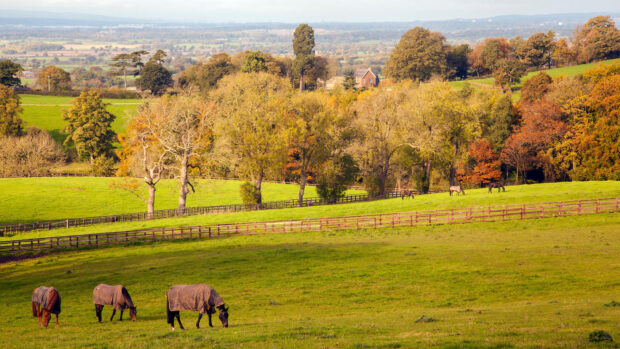Grass sickness has been feared by horse owners since it was first diagnosed in eastern Scotland in 1907. It claimed the lives of substantial numbers of draught horses during the first half of the past century, and, 100 years later, it is still with us.
It is estimated that in Scotland around one in 200 horses of all breeds die annually from the disease , which also occurs in most parts of England and Wales. Indeed, Britain has the highest incidents of grass sickness worldwide, but it is also well known in Northern Europe, particularly in Germany, Denmark and Sweden.
Why is it so feared? Firstly, it can strike without warning, and most frequently affects young horses of two to seven years of age. Secondly, there is no reliable or specific treatment. Horses which succumb to the acute form either die or require euthanasia on welfare grounds within 48 hours (up to seven days in sub-acute cases).
Sufferers of the chronic form may linger for weeks and months, with most eventually dying. But Professor Bruce McGorum of Edinburgh Vet School reveals there is at least some good news on this.
“The treatment of chronic cases has improved in the past ten years, so much so that horses which fulfil the initial selection criteria (making treatment a worthwhile proposition), now have a survival rate of 50-80%,” he says.
Although this is still a very small number, some horses do get better.
The third reason for fearing the disease is that short of preventing that horse’s access to pasture, there is currently little that can be done to prevent it.
Grass sickness is distressing for both horse and owner. The major clinical signs are related to damage to nerve cells in the autonomic nervous system, the system that controls normal bodily functions. Particularly affected are the nerves that control and co-ordinate movement of the digestive tract from the throat right down to the rectum.
Affected horses may have difficulty in swallowing, develop colic and constipation and, in acute cases, rapid and painful distension of the stomach with the discharge of a foul smelling fluid down the nose. There is usually a severe and rapid loss of weight leading to emaciation.
There has been a substantial amount of research into the causes of grass sickness but with no definitive success. In the past there have been suggestions that it was due to the “cold north east wind chilling the bowel”, and mycotoxins produced by moulds and fungi have also been implicated. More recently, the idea that some kind of infectious agent is involved has come to the fore.
“There’s no doubt that horses seem to develop an immunity to the disease, hence the predominance of younger horses being affected,” says Bruce.
“Furthermore, it has been shown that foals receive protective antibodies to the proposed agent in the milk from the mare. This accounts for the general absence of the disease in animals below two years of age.”
In 2001, the death from grass-sickness of the racehorse Dubai Millennium (pictured) brought the disease into the public spotlight. With the generous financial support of his owner, Sheikh Mohammed bin Rashid al Maktoum, an international conference was speedily organised by Dubai’s Central Veterinary Research Laboratory (CVRL).
This brought together experts from the United Arab Emirates, UK, Germany, and USA, with a view to determining a specific cause. The result was the donation of $1million by Sheikh Mohammed to establish the Dubai Millennium Research Foundation (DMRF). Its remit: to identify the definitive cause of the disease so that it could be prevented.
With investigations carried out across the world from Dubai to the USA, it became apparent early on that it would be necessary for a named vet to co-ordinate the research efforts. Dr Scott Pirie, a vet from Edinburgh University, was appointed as Dubai Millennium Foundation Vet, and currently works between the UK and CVRL.
When in Dubai he works in close conjunction with Dr Ulrich Wernery, scientific director of CVRL, and his staff to advise on and assist with research carried out there.




